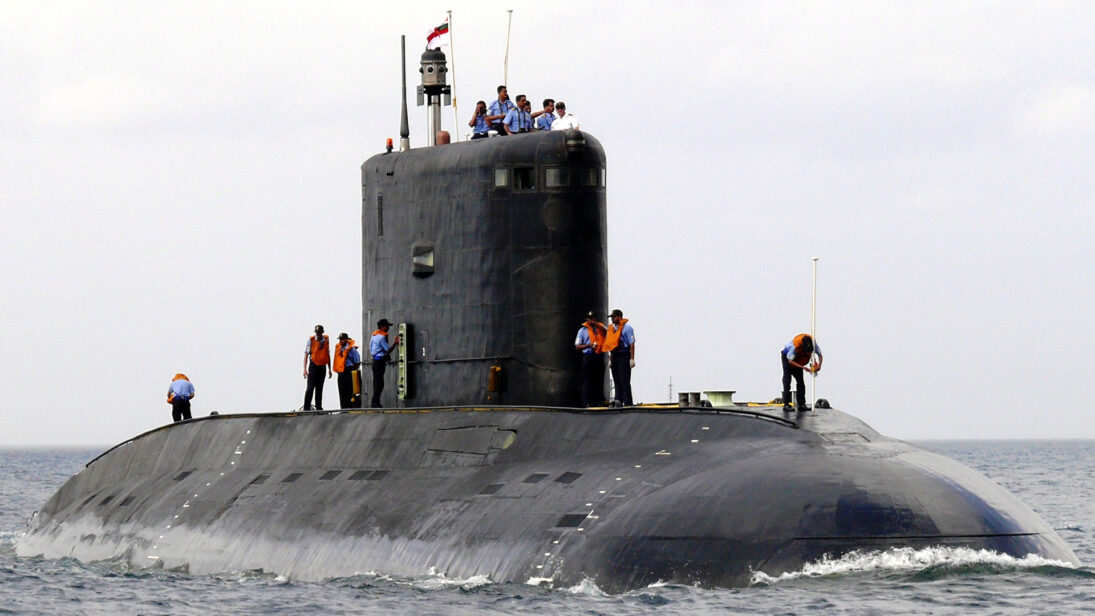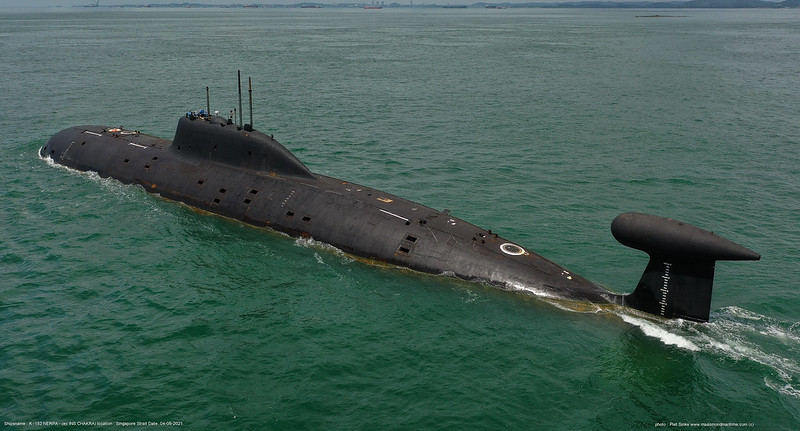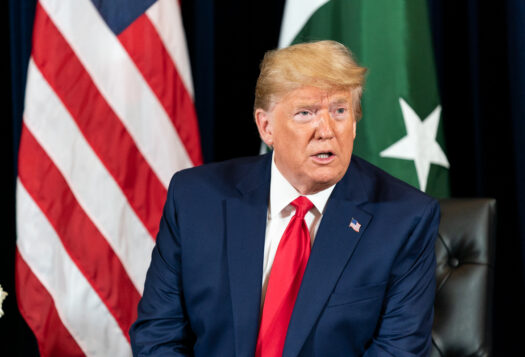
Maritime commerce in the Northwestern Indian Ocean has been vulnerable to twin threats in the last six months. On the one hand, the Yemen-based Houthis have attacked international shipping passing through the Red Sea to draw global pressure on Israel to stop its war in Gaza, which has now killed about 35,000 people. On the other, taking advantage of this disruption, maritime piracy off the Somali coast and the Gulf of Aden has made a dramatic comeback.
Amidst these developments, between late March and early April, the Indian Navy embarked on a 23-warship deployment, its largest ever in the Indian Ocean, with 12 ships in India’s Western seaboard, ten in the Arabian Sea, and two in the Gulf of Aden. More notably, the Indian Navy also deployed 11 of its 16 active submarines — a first in over three decades, signaling an ongoing shift in the Indian Navy’s external and internal postures. Externally, the deployment reflects the Navy’s greater willingness to use its submarine arm as a deterrent against regional adversaries. Internally, it is a signal of reassurance to its domestic audience; affirming the potency of India’s submarine fleet amidst recent acquisition troubles.
Externally, the deployment reflects the Navy’s greater willingness to use its submarine arm as a deterrent against regional adversaries. Internally, it is a signal of reassurance to its domestic audience; affirming the potency of India’s submarine fleet amidst recent acquisition troubles.
Looking Outward: Regional Deterrence
Almost a decade ago, external observers such as Walter C Ladwig argued that there is little backing for the idea that “concern about extra-regional navies is driving Indian naval modernization.” Indeed, the Indian Navy’s submarine arm has historically been its weakest – presently operating five French Scorpenes (Kalvari class), four German Type-209s (Shishumar class), and seven Russian Kilo (Sindhughosh class) submarines. By comparison, China presently operates 60 submarines of various classes, with plans to expand the underwater fleet to 80 by 2035.
Now, several sources point to a causal connection between the Indian Navy’s increased attention to submarines and its concerns about extra-regional navies. The Indian Navy has long had concerns with China’s People’s Liberation Army Navy (PLAN), now the world’s largest maritime force by personnel and has steadily increased its presence in the Indian Ocean in recent years. For instance, in August 2022, India unsuccessfully attempted to pressure Sri Lanka to disallow a Chinese surveillance vessel, Yuan Wang 5, from docking in Hambantota port. More recently, another Chinese research and surveillance vessel docked in the Maldives amidst New Delhi’s diplomatic tiff with Male. Similarly, other ships, such as the Yuan Wang 3, have entered the Indian Ocean multiple times before key Indian missile tests. At least six Chinese vessels, including submarines, operate in the Indian Ocean at any given time, with 13 vessels present at the time of publication.
Moreover, while mitigating the threat from the PLAN is the long-term objective, preserving the Indian Navy’s edge over Pakistan’s navy remains a strategic interest. In August 2023, a few months before the latest iteration of China and Pakistan’s flagship exercise in the Arabian Sea, “Sea Guardian”, India’s Chief of Defense Staff referenced the “joint threat” from China and Pakistan, particularly China’s support for the expansion of the Pakistan Navy (most of whose platforms are now Chinese). Pakistan also already operates the French Air-Independent-Propulsion (AIP) equipped Agosta 90-Bs and is the first navy in South Asia to do so. AIP systems allow a submarine weeks of submerged operations, an inarguable advantage during active hostilities.

Looking Inward: Maintaining Credible Submarine Capabilities
The lack of an AIP, then, is the main contemporary concern of the Indian Navy. Pakistan’s 2016 deal with China for four new AIP-equipped Yuan class submarines triggered concerns in India about the Indian Navy losing its qualitative edge. The former commander of India’s first nuclear submarine, the INS Chakra, termed India’s current underwater capabilities “pathetic.” On April 28, 2024, China launched the first of the Yuan class vessels built for Pakistan, commissioned as the Hangor class, proving the deal’s vitality. China emerged as a late but formidable entrant in the AIP manufacturers club in 2018, with its Type 039A becoming the quietest submarine in the PLAN fleet.
Additionally, the Indian Navy’s submarine fleet is facing multiple issues, with its second nuclear submarine (INS Arighat) facing inordinate delays and its Kilo class boats set to be decommissioned in the near future. India’s own quest for an AIP system through Project 75-I has stalled across its various stages, with multiple original equipment manufacturers failing to meet the Indian Navy’s required specifications. This includes Russia, which does not have a proven AIP system of its own. India’s continuing determination for an AIP under 75-I is evident in its continued engagement with Germany and Spain, and its recent approval of USD $7,187,712 tender for six new AIP-equipped submarines with over 60 percent indigenous components in early May. Arguably, as a stop-gap, the Indian Navy has resorted to purchasing additional Kalvari class Scorpenes under its older submarine program and a future retrofit of India’s older Scorpenes with the AIP system by Naval Group France.
In the short term, the Indian Navy is driven to ensure that its present submarine capabilities are credible and that its current operational effectiveness remains unaffected. Breaking records with new deployments helps this cause. For instance, in August 2023, the Indian Navy’s most recently commissioned Scorpene—the INS Vagir—embarked on an extended-range deployment to reach Australia’s Fremantle. It marked the first time an Indian submarine has undertaken a mission of over 4,350 miles to Australia and the longest deployment for a Scorpene globally.
The Indian Navy is among the oldest hands in combating piracy off the Somali coast.
Law-Enforcement with a Side of Deterrence
Since January 2024, the Indian Navy has been proactive in its anti-piracy operations, intercepting attacks, rescuing container-turned-pirate-ships, and liberating ship crews in the Northern Indian Ocean. Tactically, this reflects the Indian Navy’s efficacy in mitigating non-state maritime threats, as the Indian Navy is among the oldest hands in combating piracy off the Somali coast. Strategically, it establishes the Indian Navy as the preeminent resident naval power in securing Indian Ocean Sea Lines of Communication (SLOCs).
However, while surface warships remain key to the Indian Navy’s law enforcement operations in the Indian Ocean, submarines are the “platform of choice” for the Navy’s latest doctrine emphasizing sea denial in choke points and the interdiction of enemy SLOCs. The Indian Navy’s willingness to display its submarine prowess is designed to both placate internal apprehensions about its underwater capabilities as well as deter regional and extra-regional adversaries, adding geopolitical signaling to its larger law-enforcement deployments. In any case, Chinese reactions to the large-scale Indian deployment have been negative, characterizing it as “muscle flexing” rather than addressing the root causes of the Red Sea threat.
While such deployments do not affect the historical hurdles that Indian defense acquisition has traditionally faced, they do well to service the Navy’s doctrinal objectives and reaffirm the deterrent capabilities of its extant submarine fleet, ultimately shoring up India’s position as a net security provider in the region.
Also Read: Lakshadweep and Agalega: Implications of India’s Naval Dominance
***
Image 1: Kilo Class Submarine via Flickr
Image 2: INS Chakra via Flickr


